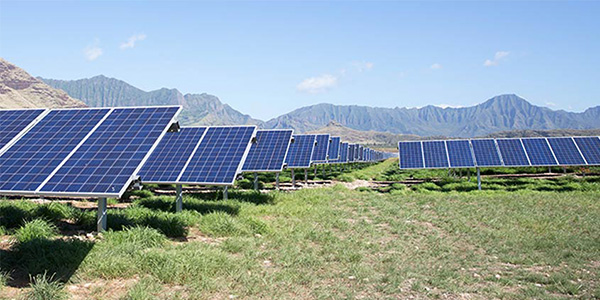Anger erupted last week during a meeting of the Hawaii Public Utilities Commission and Hawaiian Electric Co. (HECO) over mounting delays and the lack of contingency plans around the planned closure of Oahu’s only coal-fired plant.
Shutdown of the AES Hawaii Power Plant in September 2022 could leave Oahu’s grid with a 180-MW deficit. Renewable energy projects spearheaded by HECO are slated to come online within the next few years, but the timing of those projects coincides closely with the plant’s shutdown, leaving the PUC worried about potential for large energy shortfalls in the event of delays.
Several renewable projects have been delayed almost a year, eroding confidence in HECO’s ability to deliver. The utility’s update to the PUC on Tuesday met with sharp disapproval from Commissioner Jennifer Potter, who accused the company of blaming others for delays and having no adequate plan to make up the lost energy production.
“You’re failing across the board every single year,” Potter said. “There are problems with the planning that’s happening at this utility.”
Potter argued that HECO’s timeline was problematic from its inception and said it was “disturbing” that the company had stated that the “Stage 1” renewable projects in a request for proposals were never originally intended to replace the AES plant.
HECO Senior Vice President of Planning and Technology Colton Ching responded that the RFP was never intended to fully replace the AES output but had been co-opted for that purpose because of the alignment of timelines.
“The idea of renewables paired with storage wasn’t the intent, from the RFP standpoint, to then use that capacity to replace AES,” Ching said. “It was to see … whether it created a better value for our customers. At the end of the evaluation, we determined although those projects with storage were more expensive in the [power purchase agreement], they provided more value and were a better choice.”
Potter was unconvinced: “What was your plan to replace AES, if not these projects? Here we are now, and we don’t have these projects on deck.”
She noted that HECO expects to have only one new project in service prior to the retirement “thanks to research from” the Hawaii Natural Energy Institute: the 12.5-MW AES Solar West Oahu project.
“And it sounds like that might get us over just a little hump,” she said. “But what happened? … And what are you going to do about this when it’s your responsibility at the end of the day?”
‘From Cigarettes to Crack’
“I am equally disturbed and uncomfortable,” PUC Chair James Griffin told Ching. Pointing out that the AES plant is the largest single source of energy output on Oahu, he asked, “Where’s the rest of that energy going to come from?”
Ching explained that the West Oahu solar project and proposed 185-MW Kapolei Energy Storage project should provide enough energy for demand.
Griffin was skeptical: “What is going to be charging that? There’s no new energy generation sources, so where’s the energy going to come from?”
Ching responded that HECO’s contingency plan is to intermittently rely on oil-fired generation for the “early months and early years” of high energy use.
“Your plan, to me, amounts to a shift from one fossil fuel to another,” Griffin said. “We’re going from cigarettes to crack. We’re going from coal to oil.”
Ching said the incremental approach is necessary because the complexity of integrating new technology into the grid requires extensive testing, meaning that delays and continued reliance on fossil fuels would be expected. He also contended that the delays stem in part from developers’ changing plans.
Griffin disagreed. “You point the finger to all these other entities for all these delays, but what I see is every single project and program that runs through the department is stuck in the slow lane — every single one.” Turning to the issue of grid reliability, he asked, “Are we going to be OK?”
“With the projects that are approved to date, our reserves going into the fall of 2022 when the AES goes away are going to be very tight,” Ching said. “What we are asking for is an approval of all of the projects that we put forward to the commission, including the Kapolei Energy Storage Project, which will come in before the AES [shutdown], and with those resources, we will be OK.”
“So your answer is we will be OK, if we approve the most expensive project [in the RFP] that is an oil-fired peaking unit?” Griffin said.
He said that construction of a new oil-fired plant would increase Hawaii’s reliance on the global oil market, potentially driving up electricity costs for consumers. It also contradicts the state’s goals of switching to renewables for resiliency and reducing GHGs. “We have to look at resources that don’t take us off the path we want to be on.”
Ching and the commissioners agreed it was in the state’s best interest to accelerate the RFP projects but that accelerated completion dates were hard to identify. Ching said that the newness of the technology integration makes it difficult to pin down what can and cannot be accelerated.
Griffin ended the meeting with a declaration: “My baseline is, we’re moving off of fossil fuels, we’re not going to oil, we’re going to do it in a safe way, a cost-effective way, and it’s not a huge debate.”





